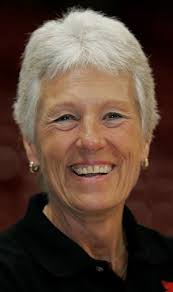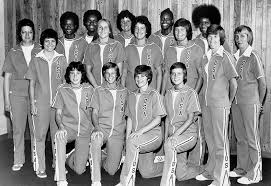The NBA Finals date back to 1947 (when they were known as the Basketball Association of America Finals) and the very 1st NCAA tourney was held in 1939. Olympic basketball competition is even older: it debuted as a demonstration event in 1904 and the men’s version became a medal sport in 1936, with the women finally getting their chance to go for the gold in 1976. The United States has dominated Olympic basketball competition from the start: the men have won 15 gold medals in the 18 tournaments they have participated in during the past 84 years, while the women have won 8 gold medals in the 10 tournaments in which they have competed during the past 44 years. Those of you who were looking forward to the 2020 Olympics opening ceremonies in Tokyo on July 24, 2020 will have to wait an extra 364 days, as the coronavirus caused a postponement until July 23, 2021. Due to the absence of college basketball since mid-March, HoopsHD’s Jon Teitel decided to fill the void by trying to interview as many prior Olympic players/coaches as possible so that you have something to read this summer while not watching the Summer Games. We continue our coverage by chatting with Hall of Famer Jill Hutchison about Charlotte Lewis winning a silver medal in 1976. Today marks the 44th anniversary of team USA beating Czechoslovakia 83-67 to clinch a silver medal, while the Soviet Union beat Japan 98-75 to clinch the gold.
Charlotte attended Woodruff High School but since Peoria public schools did not offer varsity basketball for girls back then she just played against boys on local playgrounds: how did you learn about her, and how did you recruit her to Illinois State? I had never heard of Charlotte until she showed up on campus. She had never played organized basketball but some of our players saw her in the gym and convinced her to try out. It was not a tough decision to take her!
She was a 6’2” center who set school records for REB in a game (27) and season (345): what was her secret for being a great rebounder? Charlotte was the best female rebounder that I have ever seen: she could literally sky! She had a high center of gravity and very strong upper body that made her a natural rebounder. She learned to track the ball off the glass and was intimidating in the paint.
She also played volleyball at Illinois State and finished 4th in the nation in the javelin in 1975: which sport was she best at, and which sport did she enjoy the most? Although Charlotte enjoyed both volleyball and track her favorite/best sport was basketball.
She won a gold medal with team USA at the 1975 Pan Am Games (the 1st gold medal for the US since 1963) and won a silver medal at the 1976 Olympics: what did it mean to her to win a gold medal, and what did it mean to her to win a silver medal? Charlotte was beaming when she returned from both the Pan Am Games and the Olympics. Both were definite highlights of her career for which she was extremely proud.
In February of 1977 she scored a career-high 37 PTS in a game vs. Wisconsin-La Crosse: was it just 1 of those scenarios where every shot she put up seemed to go in because she was “in the zone”? She was “in the zone” and played with an unbelievable energy that day. She got most of her points in the paint but could also hit the 12-15 footer.
In 1977 she was named a Kodak All-American and was a finalist for the Wade Trophy (as the nation’s top female athlete): what did it mean to her to receive such outstanding honors? Being named an All-American was huge for Charlotte and going to New York to accept the award was the thrill of a lifetime. She was also proud to be among those named a finalist for the Wade Trophy since she knew many of the other great players.
She won 4 AIAW state titles from 1974-1978 but left school before graduating and played pro basketball for 15 years both abroad and in the US: why did she leave school early, and how was she able to play pro for such a long time? She left before finishing student teaching because she was not confident in front of a class…although she left with better than a 3.0 GPA. She played with some great players, especially in Brazil. She was an elite player with other elite teammates and enjoyed her time overseas.
After retiring at age 40 she returned to Illinois State to get her degree: why did she come back to campus, and how on earth did she balance 3 jobs while simultaneously taking classes?! Charlotte returned to her hometown of Peoria and was determined to finish her degree. She attended Illinois Central College and Illinois State simultaneously while working those 3 jobs. She was focused and totally determined to finish in 2 years…and she made it!
She was inducted into the Illinois State Athletics Hall of Fame in 1983 and her jersey was retired in 2002: where do those rank among the highlights of her career? Charlotte received a lot of recognition following her Olympic experience and was very appreciative of her Hall of Fame recognition. Retiring her jersey was especially “sweet” since the only other retired jersey at Illinois State was Doug Collins: they both played in the Olympics.
She passed away in 2007 at age 52 and was posthumously inducted into the MVC Hall of Fame in 2016: when people look back on her career, how do you think that she should be remembered the most? Opponents and teammates alike would consider Charlotte a very intimidating player. Her ability to dominate the lane, dunk the ball, snatch a rebound off the rim and run the floor with the guards made her special. To her teammates she was also a gentle giant: she had a beautiful singing voice, a caring for others, and a huge heart. She was a special person who came out of the projects and became successful not only as a player but a person.





